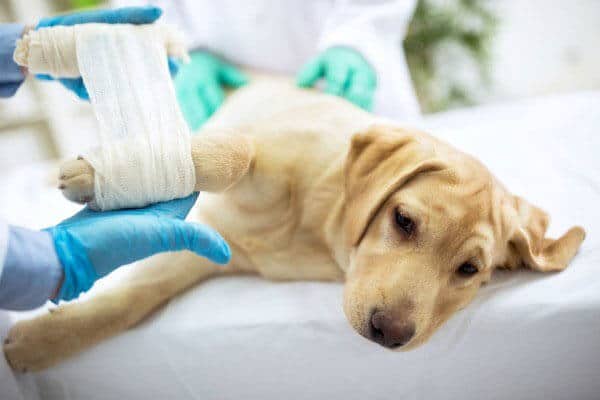COMPREHENSIVE CARE
Kindness Animal Hospital offers convenient, affordable ACL repair for dogs in the Tulsa and surrounding areas. #1 Dog ACL Surgery Vets in Tulsa, Oklahoma


If your pet is lame on one of their rear legs, an injury to the cruciate ligament is possible. This is the most common cause of lameness in dogs. The cranial, or anterior, cruciate ligament attaches the upper leg bone to the lower leg bone inside the knee, or stifle joint. When it tears, it causes instability in the knee joint. This causes pain but, more importantly, leads to severe and debilitating arthritic changes. The sooner the instability is repaired, the better.
The tear can happen due to a slip or other abnormal movement. It can also happen slowly over time. Larger, very active or overweight dogs are more prone to the injury, but it can occur in any dog and at any age. Even cats can tear their cruciate ligaments.
Symptoms range from sudden lameness where your pet does not want to bear any weight at all to intermittent lameness that is worse after increased activity. A common symptom is sitting with the affected leg out to the side. Diagnosis can often be made by manipulating the knee. Sometimes sedation is required. Radiographs can help but are not usually necessary. There are 2 categories of repair. The first involves cutting the bone in two and screwing a metal plate onto the bone. The TPLO and TTA are in this category. These repairs are much more expensive but may be preferred for larger and more active dogs. The second type of repair involves placing a strong fiber outside the joint (but under the tissues) to mimic the stabilizing effect of the ligament. This is the repair that we do at Kindness Animal Hospital.
Dr. Hurst has been performing these surgeries for over 20 years with excellent results. The cost ranges from $1800 to $2500, depending on the size of the pet. Regardless of the type of repair performed, outcomes are usually quite good, although the knee will most definitely become arthritic sooner than the uninjured knee. Unfortunately, if your dog has torn the ligament in one knee, there is a good chance he or she will eventually have the same thing occur in the other knee.

Sign up to receive news and special offers from Kindness Animal Hospital.
TIMINGS
CLOSED DAILY FROM NOON TO 1PM FOR MEAL BREAK AND STAFF TRAINING
CLOSED